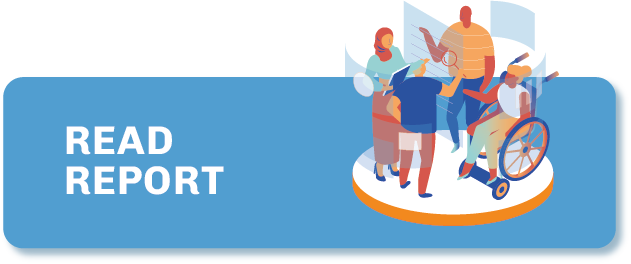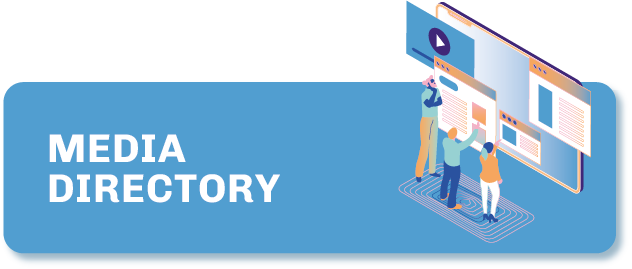Georgia
Georgia’s digital native media landscape is very diverse, populated by small teams creating content or formats that are missing from mainstream media. For most digital media outlets, Facebook remains the most popular social network and the most-used platform to share content. More independent digital news sources have emerged for ethnic minorities in their own languages, as ethnic minority citizens have traditionally been reliant on national media organisations in their kin countries, sometimes exposing them towards targeted disinformation.
GENERAL INFORMATION
Press
freedom
ranking
Internet
penetration
POPULATION
Media organisations
in the Directory
TYPE OF COVERAGE
TYPE OF ORGANISATION

GENDER OF FOUNDERS

Press freedom
Efforts undertaken to improve press freedom in Georgia are undermined by official interference, while verbal attacks and physical assaults on journalists, including by senior government officials, are common, according to Reporters Without Borders‘ Press Freedom Index. This happens especially during election campaigns, says the organisation, highlighting that in 2021, the country saw an unprecedented number of physical assaults on journalists. “A lynch mob’s sustained and brutal assault on 50 reporters during homophobic counter-demonstrations in July 2021, under the gaze of security forces, marked an unprecedented setback,” it adds. “The absence of transparency and of progress in investigations of the event demonstrate the impunity enjoyed by those who commit crimes against journalists.”
In March 2023, the government of Georgia supported the draft law on so-called foreign agents, which would limit or even threaten the activities of media and non-governmental organizations. After the massive protests in the streets of the capital Tbilisi, the Georgian government dropped the law, claiming that the public was misled about the proposal.
Market structure and dominance
The media landscape in Georgia is diverse but also “heavily polarised”, notes Reporters Without Borders. “Television is the principal news source. Media owners often keep their hand in controlling editorial content,” says the organisation. “Hence, the Rustavi 2 opposition television network upended its editorial line after the company was returned to a previous owner. Regional and community radio stations are strengthening, as readership of the print media declines and the online news audience grows.”
Although both the media and citizens alike are able to share facts and opinions freely, the government has significant influence over large sections of the media and public opinion. “Political parties and groups exert influence over national TV channels, social media pages and groups, and influencers,” notes Internews in a recent ecosystem assessment of the country.
How media is funded
Revenue from advertising is an important source of income for Georgian media organisations, and the largest share of this is still earned by the television industry. “The market is not big enough to sustain a plurality of media outlets, and some organisations – mostly TV stations – receive financial injections from private owners, derived either from more profitable media assets or other business holdings,” says the Internews assessment.However, in 2021 broadcasters witnessed a sharp drop in financial inflows due to a variety of factors, notes the organisation GRASS in its 2022 report on the state of the media in Georgia. These included amendments to the law on gambling, making it virtually impossible for gambling companies to air advertisements on Georgian TV channels, as well as pandemic-related cuts to businesses’ media budgets, and “explicit or implicit pressure” on businesses from the authorities, preventing them from injecting financial resources into critical TV stations, says the report.
On the other hand, “donors have traditionally played a major role in Georgia’s media sector”, notes a Media Influence Matrix report on media influence in Georgia, published by the Central European University’s Center for Media, Data and Society. “Although the level of donor funding hardly matches the financing pumped into the media by the government or commercial advertisers, it is higher than in other countries in the region and in many cases has been instrumental in the operation of media companies,” says the report. For the majority of digital media outlets, donor funding remains as their main, if not only, funding source to date.
Seventeen profiles of digital native media organisations from Georgia are included in the directory. About a third of these media organisations were founded by groups coming from the traditional media landscape to fill gaps that they had seen in the TV, radio or print sectors. These groups brought their journalism experience and enthusiasm to innovate and experiment with new digital formats, or to cover topics absent from the mainstream media landscape. Some of the trends they have brought to Georgian media have been subsequently adopted by mainstream media organisations, contributing to the overall development of the media industry in the country.
While the most-used platform by these digital media outlets is still Facebook, they have also started experimenting with various other platforms recently, such as Telegram (mostly for covering specific events, such as Russia’s invasion of Ukraine), newsletters with exclusive content, one-off print media projects, and so on. However, none of these platforms – except for Facebook – have become widely used by Georgian digital media outlets in general.
Digital media publications still rely very heavily on donor funding in Georgia. There are however exceptions; organisations which were established with the declared aim of creating the precedent of an independent, self-sustainable commercial media outlet in Georgia, such as On.ge or Project 64. While the advertising market is too small and mostly absorbed by television, offering content services has become a solid alternative or substitute to donor funding for digital media organisations which have a strong in-house visual storytelling skillset, such as Movement, ForSet or Project 64.Some media outlets have experimented with crowdfunding or individual donations, but these attempts have not proven to be successful for a country of less than four million people, about a fifth of whom live under the poverty line according to Georgia’s national statistics office.Most of the media leaders note that they are looking to diversify their revenue sources. One of the challenges identified in this process is that the absolute majority of media leaders come from a journalistic background, and they lack business-related experience. “I am a media guy and know a lot about multimedia production, but when it comes to business, my experience is zero,” says George Gogua, co-founder and CEO of Project 64, an experimental media content creation platform. Determined to overcome these challenges and establish an exemplary self-sustainable media organisation in Georgia, Gogua has been working with external consultants on working out his business strategy and developing services for his media venture.
Digital media outlets have also identified the need to create original content for ethnic minority groups in their first languages to decrease their dependency on information sources from outside Georgia, and increase their resilience towards foreign informational sources. In order to create and distribute multi-language content, partnerships have been formed between various media outlets to adapt, translate and publish each other’s content. For example, OC Media partners with six media outlets to translate and re-publish its English content in Georgian, Azerbaijani, Armenian and Russian, while JAMnews is part of the Russian Language News Exchange initiative, exchanging content with independent newsrooms from Eastern Europe and Central Asia for its pentalingual website.
Supporting entrepreneurial journalism in small countries like Georgia is a potential solution to the problems of a small advertising market and heavy donor dependency. This support can take the form of media incubators, long-term mentorship programmes for media leaders, supporting them with affordable consultancy, among other initiatives.
Last updated: March 2023
CREDIT FOR STATISTICS: Press Freedom statistics, RSF Press Freedom Index 2022; Internet penetration and population statistics, from Internet World Stats

